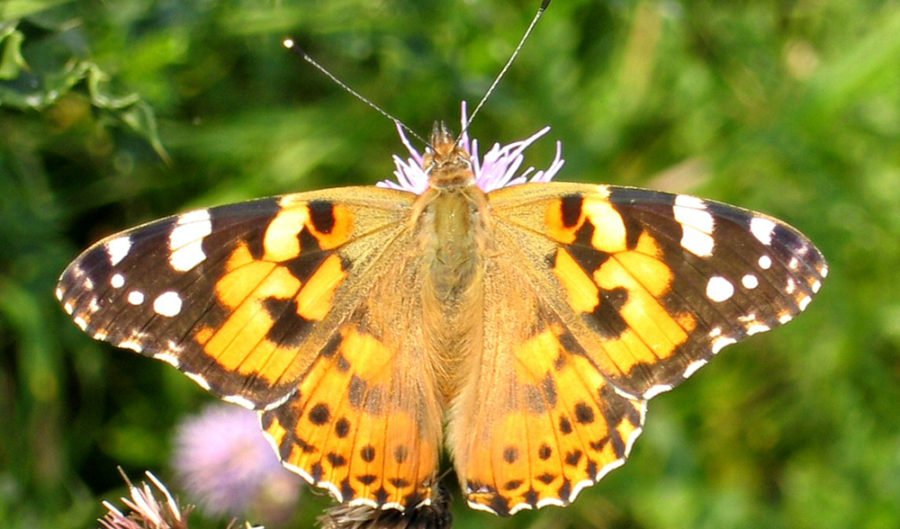Globetrotting butterflies

SOME OF THE world’s greatest journeys have been made by butterflies. The painted ladies (Vanessa cardui) that turn up in Western Australia from time to time are thought to be visitors from Africa, borne east by the westerlies – those strong reliable winds that circle the globe.
While it seems unlikely that 4000km of ocean could be crossed by mere insects, these determined travellers are often sighted out at sea in the Indian and Atlantic oceans. Vast numbers have been detected on radar leaving Europe for Africa on high-altitude winds.
One was even observed resting on the ocean, showing what else they can do.
They put to shame the journey made in 1899 by a Christmas emperor (Charaxes andrewsi), a striking butterfly endemic to the rainforest on Christmas Island. An individual appeared at Roeburne in a dry corner of WA, 1500km from home.
North Queensland attracts visits from a parade of New Guinea butterflies, awing collectors, but their journeys are even shorter.

“Coming to Queensland soon” – the tawny coster (Acraea terpsicore). (Image: Charlesjsharp/Wikimedia)
Butterflies and moths from Australia often wander the 2000km or so to New Zealand. More than 40 species have made the trans-Tasman journey, including the varied eggfly, blue tiger, meadow argus, evening brown and bogong moth. Spring arrivals sometimes breed, but New Zealand’s biting winters kill off any offspring.
Macquarie Island, 1200km south-east of Tasmania, is a colder destination reached by Australian moths and butterflies, arriving in as little as 10 hours on airflows ahead of cold fronts.
Unsafe travels
Millions of enthusiastic butterflies end up travelling to their doom, becoming snacks for fish or detritus on distant shores.
Of those few that reach terra firma, only a tiny percentage leave descendants. However, insects in Australia with large international distributions, such as the chequered swallowtail, long-tailed pea-blue, migratory locust and wandering glider (a small-ish dragonfly), indicate that sea crossings can pay big dividends.
An attractive orange butterfly, the tawny coster (Acraea terpsicore) is the latest to show this. It has been thriving in northern Australia since its arrival near Darwin in 2012. Native to India and Sri Lanka, it began expanding east through Asia some decades ago, forming lasting colonies almost everywhere it went. Wandering towards Australia at an average 200km a year, it reached Singapore in 2006, Java in 2008 and Timor in 2012. It has spread widely across the Top End and Kimberley, thanks to a small native plant, spade flower (Hybanthus enneaspermus) that its caterpillars thrive on and decimate. It is expected in Queensland soon.
Tim Low is the author of the award-winning book Where Song Began. Follow him on Twitter @TimLow5.

